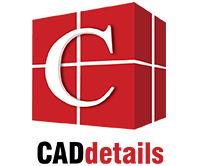As a building product manufacturer in 2024, you already know that you can benefit from providing Revit or BIM models for your products to architects. Doing so allows architects to use BIM models to integrate various building components into their designs. By providing BIM models, you can ensure your products are considered and specified early in the design process. However, there are important aspects to keep in mind when providing BIM models intended to be used in design projects. Leveraging your BIM to get specified into projects requires meeting minimum requirements and providing quality product information.
BIM Considerations for Building Product Manufacturers
As a building product manufacturer, you supply Revit or BIM content to architects with the goal of being specified on a project. Revit is a powerful tool for getting your products embedded into construction projects. Your BIM should meet the standards and requirements for the type of projects you want to be specified in. Unfortunately, many manufacturers struggle with providing the design community with a functional Revit or BIM portfolio.
There is a lot that goes into creating quality Revit for your products, and reviewing your Revit for functionality requires a level of expertise. At CADdetails, we evaluate building product manufacturer files before hosting them on CADdetails.com. We review manufacturer BIM content to ensure it is usable by design professionals. Our in-house BIM experts test manufacturers’ files to ensure they will function within an active Revit project.
Data & BIM Quality Assessments
Our BIM experts have been reviewing CADdetails client files since 2008. Over the years we have found many files from manufacturers that do not function within a project scenario. These files will fail to help get products specified in BIM projects. This is often due to a lack of data. BIM models must have data to function. It is important to not just have a good-looking model but to have the right data set up in the right way for the BIM model to be useful to designers. While finding out your BIM models do not function is frustrating, our BIM experts can walk you through your options for making your product information useable in BIM projects.
In BIM there is a lot that goes on below the surface and isn't easily seen without digging into the depths that really make a file function. For example, categories and classifications are important for a functioning Revit file. If elements are not categorized properly the data will not get pulled and the user will be unable to specify the product in their project.
BIM data includes product information, options, and dimensional values. The data can change based on the product type and the project. Materials contain their own set of metadata, shading characteristics, and rendering assets. Many Revit files will handle multiple product SKUs and flexible product options.
As a manufacturer, you should be aware that your BIM models require maintenance. The data in the BIM models must be maintained for your product to be properly specified. Product information data such as product numbers can be impacted by rebranding and other product updates. Data may be live linked to a database and that needs to be updated. These changes must be updated in the BIM model.
To determine BIM quality, data should be verified for all product types and in any given project situation. Manufacturer BIM should meet the standards and requirements for the type of projects the manufacturers want to be specified in. A BIM model should have enough information to specify the product properly. To quote CADdetails’ Senior BIM Strategist, Chris Saddler, “Have data. Have the right data. Keep it updated.”.
Consistency is Key
Your BIM model information should be consistent with that available in other file types. For example, if CAD, SketchUp, BIM, and 3-Part Specifications files are available for a product, the information in those file types should agree. Discrepancies in your product documentation can compromise opportunities to specify your product and increase risk and liability issues.
Is Your BIM Good Enough for BIM Projects?
If you are a Building Product Manufacturer interested in improving your project readiness, watch this CADdetails webinar which explores what it means to be “Project Ready”. In addition to being ready to be specced into projects with coordinated and up-to-date design files including BIM, you need exposure to the right audience. Over 680,000 architects and design professionals rely on CADdetails.com for quality design files. CADdetails can ensure you have the right files along with exposure to professionals actively specifying projects.
CADdetails hosts, develops, reviews, and maintains BIM models for manufacturers, ensuring they are usable and of high quality, while also making them easy to find and download into design projects.
Ensure your BIM models are usable and accurately specified by partnering with CADdetails. We help you with the right level of development for your products and work with you to develop, upgrade, and maintain your BIM libraries. Book a call with us today to learn more!
Cover image by picjumbo.com on Pexels


-1.png)